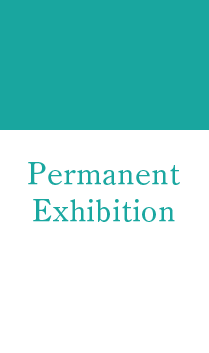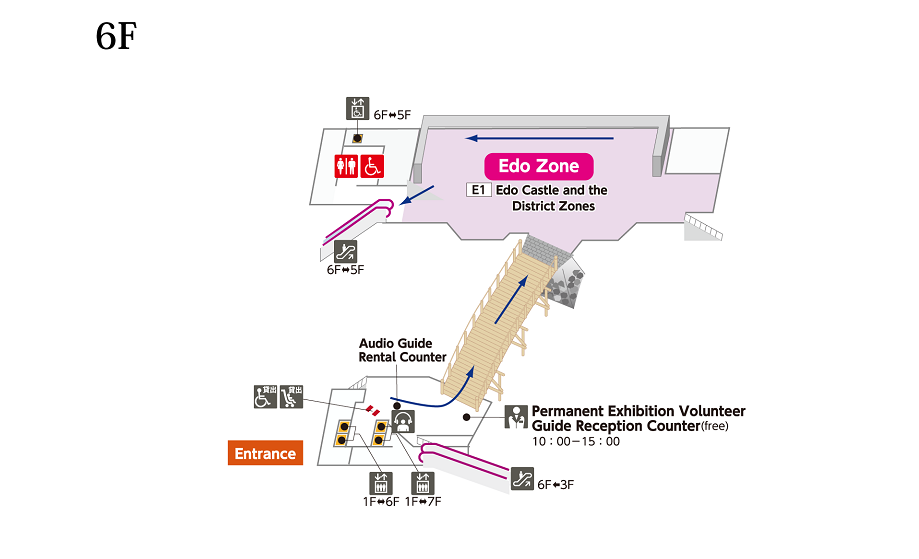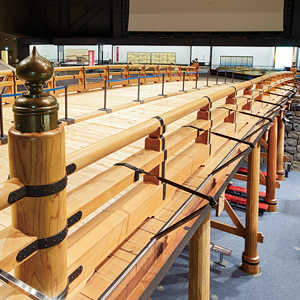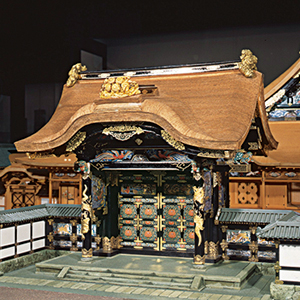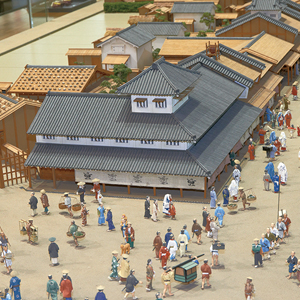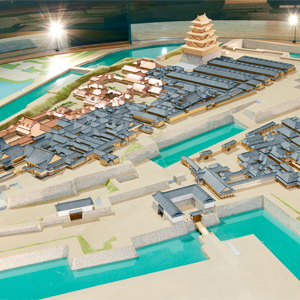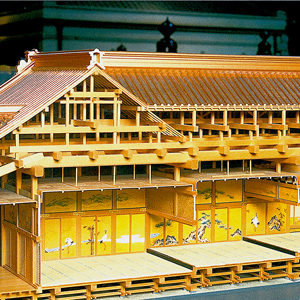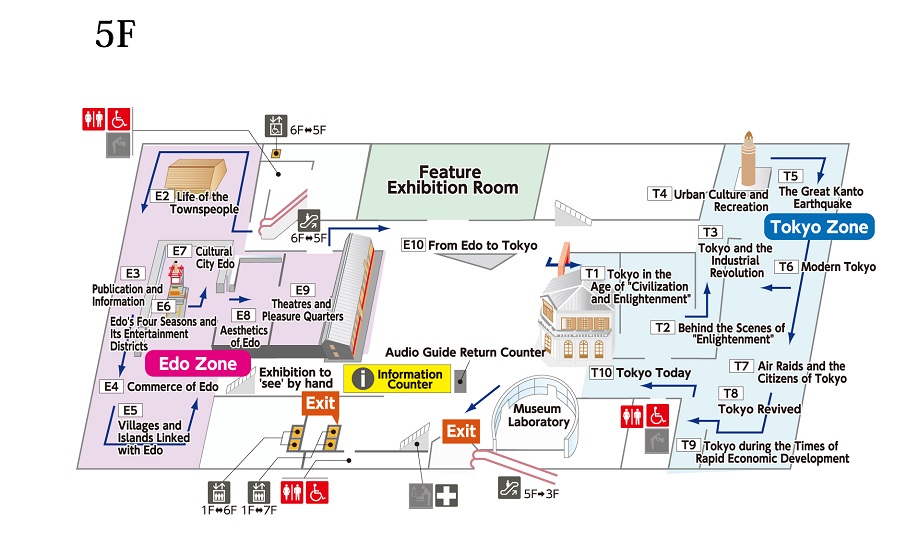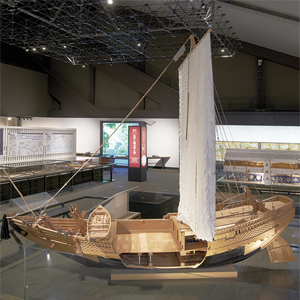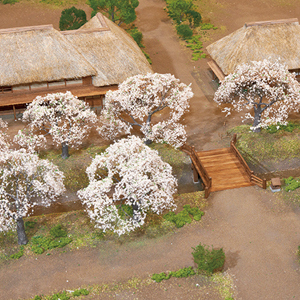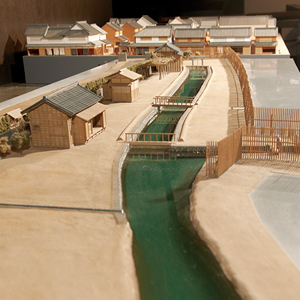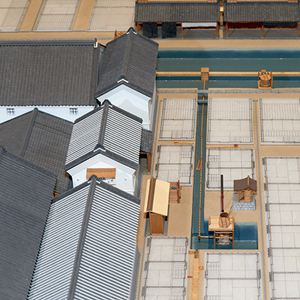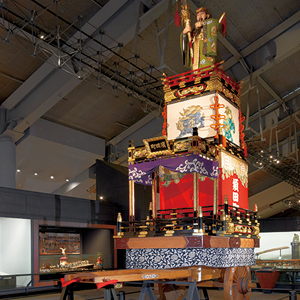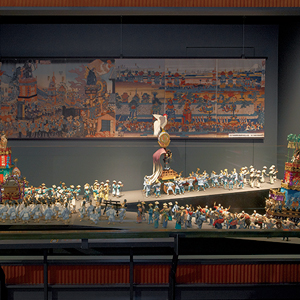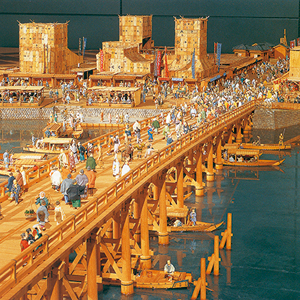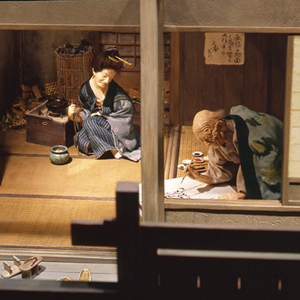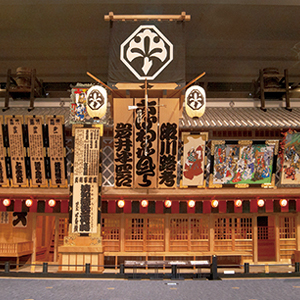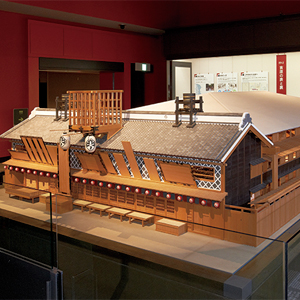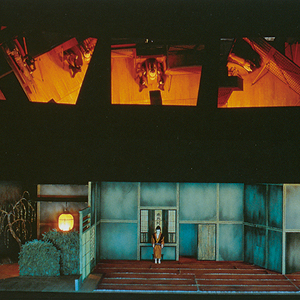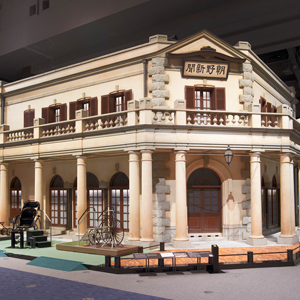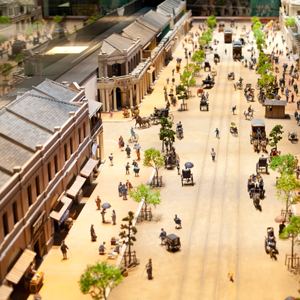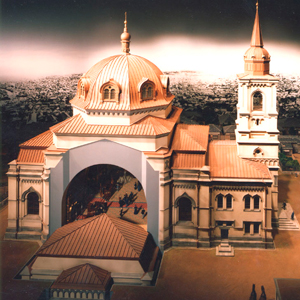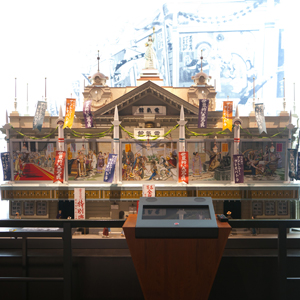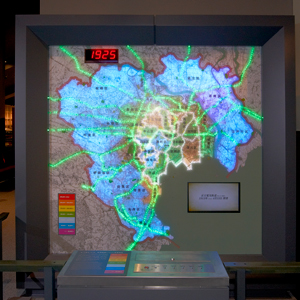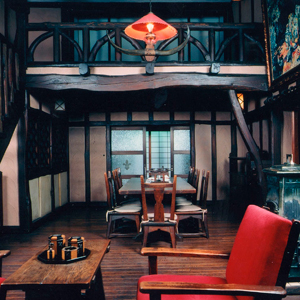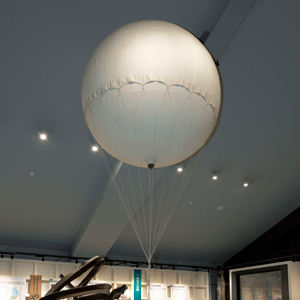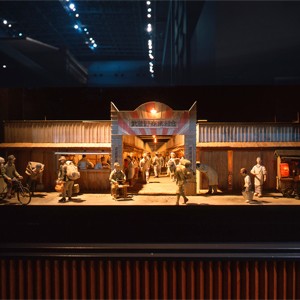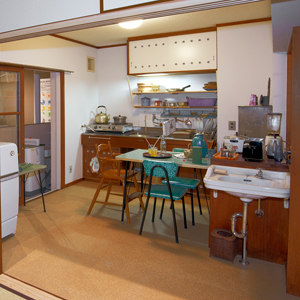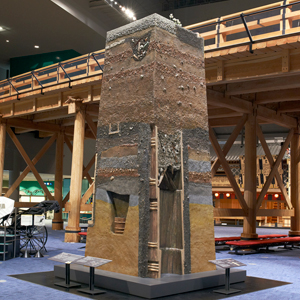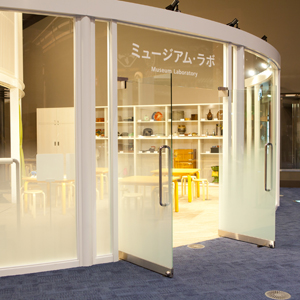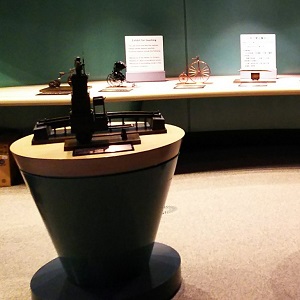In 1590, Tokugawa Ieyasu entered the Kanto area and made Edo his power base. In 1603, he was rising to the rank of seii tai shogun (literally meaning “barbarian-subduing generalissimo,” commonly known as shogun) and established his shogunate in Edo. Ieyasu worked to develop Edo into a capital suitable as the home of the shogunate. Moats and roads were built, including the Nihonbashi Bridge, and the layout of the town (“machiwari”) was accomplished to establish residential quarters for samurai, chonin (townspeople), temples, shrines, and other quarters surrounding the Edo Castle. This corner is the entrance to the permanent exhibition area, and it begins with a full-sized replica of the Nihonbashi Bridge. Awaiting you at the other end of the bridge are scale model replicas of the chonin district and daimyo (feudal lord) residences during the Kanei period (1624-1643), as well as the Edo Castle from the late Tokugawa period. Visitors can see how the land was divided with the Edo Castle at the heart of the city. In addition, the corner exhibits numerous historical materials which explain the origin of shogun families and daimyo families.








